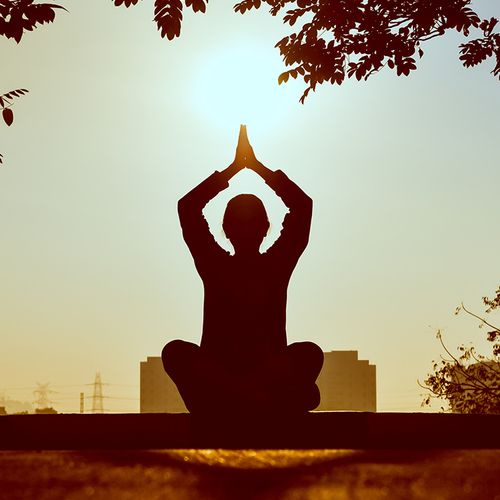We have heard all about the benefits of meditating. For decades, studies have shown that meditation helps with depression, anxiety, stress, insomnia, pain, high blood pressure, self-esteem, self-control, concentration and creativity. Yet for many people, meditation seems daunting, Maybe you find it hard to sit still...to clear your mind...to make the time...or to stick with it long enough to experience the effects.
Key to success: Choose a technique that suits your personality, schedule and level of experience, then do it consistently. Twenty minutes or more daily is a good goal, but even five minutes is helpful if you do it every day-and some techniques take almost no time at all.
If You Are A Beginner...
The methods below are effective yet simple enough for a novice. Start with just a few minutes, and work your way up.
- Single-tasking. A time-crunched society encourages multitasking-so you sort mail while on the phone and listen to audiobooks while driving.
What you may not know: The simple act of focusing fully on a single task is a meditative exercise. It improves your powers of concentration, alleviates stress and boosts mood by enhancing your appreciation of the here-and-now.
Try: Once or twice each day, give your complete attention to just one activity.
Example: When you fold the laundry, don't turn on the TV—just enjoy the softness of the fabrics and the soothing rhythm of your hand motions.
- Focused breathing. Sit in a quiet place, on the floor or in a chair, keeping your back straight so your lungs can expand. Pay attention to your breathing. Feel the air moving through your nostrils as you slowly inhale and exhale...feel your abdomen rise and fall. Then choose either of these sites (nostrils or abdomen) and focus fully on the sensations there. Soon you may notice that your mind has wandered. Don't berate yourself—this happens even to experienced meditators. Simply return your attention to the breath.
- Centering prayer. Choose a phrase or a word that is spiritually meaningful for you, such as God is love or shalom. With each breath, repeat it silently to yourself. Again, if your thoughts start to stray, just calmly return to your prayer.
If You Hate To Sit Still...
Some people can't stop squirming when they try to meditate.
Solution: Moving meditation.
- Qigong, tai chi or yoga. These practices combine specific movements with a contemplative focus on the body, so you exercise while you meditate. Many health clubs, adult-education centers and hospitals offer classes in these kinds of techniques.
Referrals: National Qigong Association (888-815-1893, www.nga.org)... American Tai Chi Association (703-477-8878, www.american taicbi.net). Yoga Alliance (888-921-9642, www. yogaalliance.org).
- Mindful eating. Eat a meal alone, in silence, savoring the experience. When you first sit down, spend a moment enjoying the colors and aromas of the food. Take a bite and chew slowly. How do the taste and texture change as you chew? What sensations do you perceive as you swallow?
Surprise: You are meditating. Continue to eat as consciously as you can, never rushing.
If You Can’t Find The Time...
Some days you may not have even five minutes to meditate-but you can take a moment.
- Three breaths. Whenever you feel tense, take three long, deep breaths. Even a few conscious inhalations and exhalations will calm you. Also use cues in your environment as regular reminders to focus and breathe deeply.
Example: Take three slow breaths every time you hang up the phone...walk through a doorway...or get into your car.
- Beauty in the moment. Three times a day, look around you and notice something lovely --the scent of someone's perfume, the happy sound of children playing. Explore the experience with your full attention.
Example: A light breeze is blowing. Watch the graceful way it makes the grass sway...listen to it whisper as it moves through the trees...feel its gentle touch on your cheeks. Notice your emotions of pleasure and appreciation and carry them with you as you continue through your day.
Secrets to Better Meditation…
If you are an accomplished meditator and want to enrich your experience, try these more advanced techniques…
- Contemplative reading. Select a brief passage-two or three sentences from a philosophy book, religious text or other writing that is meaningful to you. Read it slowly and reflectively, over and over. If your reading brings up insights, ponder them. If your mind drifts to unrelated thoughts, return to reading.
- Inquiry. Sit and focus on your breathing When a thought, feeling, sound or other sensation enters your awareness, instead of turning your attention back to the breath, explore the experience. Does it seem to have a shape or image associated with it? Does it change or fade away as you examine it? Examples...
- You notice a tickle in your shoulder. As you study it, you note that it feels diffuse...then localizes in one spot...then moves to a different area and prickles...then disappears.
- You are feeling anxious. Rather than trying to figure out what is causing this, note where the anxiety manifests in your body (a fluttery stomach, a tight muscle). any images and thoughts associated with it and how those images and thoughts change as you observe them. When a particular sensation passes, return your attention to your breath until the next sensation enters your awareness...then explore this new one. Over time, this enhances awareness and acceptance.
